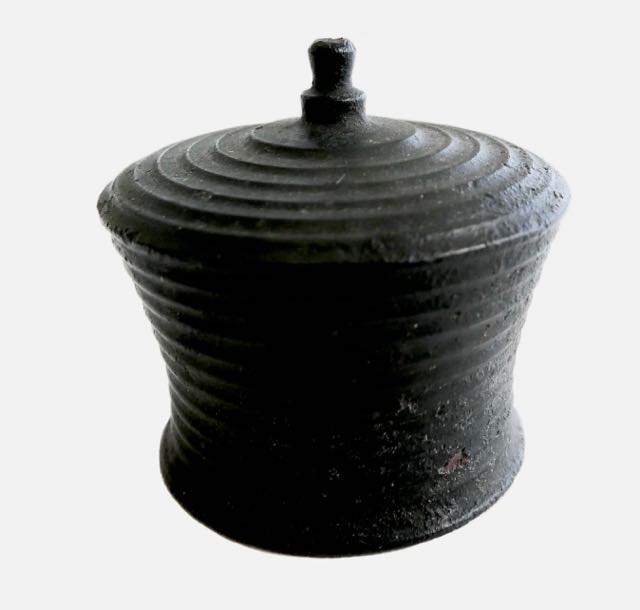Surgery |
||
Cupping glass (10) |
||
Comparing this cupping bowl with the previous one (9), the fluted surface is noticeable. Perhaps the relief was supposed to prevent the cupping head in the vapour bathhouse from slipping too far out of the Bader's hands and falling to the floor.
Repurpose In the 17th century cupping was placed in the hands of the Bader (French baigneurs) and Feldscher (military doctors). These only used the method of "bloody" cupping and did not sufficiently differentiate according to the corresponding clinical pictures. As a result, this method was slowly discredited by misuse and overuse. As a result, cupping heads could now be used for other purposes.
The Nuremberg manufacturer of coin scales, master Paulus Deinert, used from 1758 as a hallmark the letters PD together with the Loßkopf (Lass head) resp. Cupping cup - cupping head as a family nickname.
Later, the heads were literally "abused" - I have already spoken of their use as a reliquary container: "On the Fildern (pointed cabbage fields), the cupping heads were inherited from generation to generation - and rich farmers' daughters like to give in the dowry In the small metal cylinder fit exactly exactly 1000 pieces of the small balls - what the farmer when sowing the because of its high price also like to be called "Filder caviar" seed more than just a rough overview on the oversized thimble to measure the Filderkraut seeds So it came to the unit of measurement "Ventaus" ... The still well-known size with a bottom diameter of 3.7 centimeters goes back to the year 1806 and holds a Württemberg cubic inch, ie 22.12 cubic centimeters (Sascha Schmierer, The measuring cup for the precious "Filder-Kaviar", Stuttgarter Nachrichten, What's on the 20th October he 2015).
The Stuttgart were not the only ones who used cupping to measure: "Good to make bratwurst (..) also at will / a handful of half-boiled pepper and marjoram / at will / a Laß-Kopff full Coriander / and hack it all klein "(Fridericus Frisius, The Most Distinguished Artist and Handwercker Ceremonial-Politica, Leipzig 1708 p.831).
Exhibit "Baderskopf", bronze. Dimensions: max. Diameter 3,6 cm, opening 3,3 cm, height over all 3,3 cm. Bevelled outside. Origin: Southern Germany
see. Cupping head, locality: Burg Prandegg. Upper Austria. Castle Museum, Reichenstein. |




